I recently started with d3.js.I am working on a stacked area chart in d3 which looks similar to the below chart,

const stack = d3.stack().keys(["aData", "bData"]);
const stackedValues = stack(data);
const stackedData = [];
stackedValues.forEach((layer, index) => {
const currentStack = [];
layer.forEach((d, i) => {
currentStack.push({
values: d,
year: data[i].year
});
});
stackedData.push(currentStack);
});
const yScale = d3
.scaleLinear()
.range([height, 0])
.domain([0, d3.max(stackedValues[stackedValues.length - 1], dp => dp[1])]);
const xScale = d3
.scaleLinear()
.range([0, width])
.domain(d3.extent(data, dataPoint => dataPoint.year));
const area = d3
.area()
.x(dataPoint => xScale(dataPoint.year))
.y0(dataPoint => yScale(dataPoint.values[0]))
.y1(dataPoint => yScale(dataPoint.values[1]));
const series = grp
.selectAll(".series")
.data(stackedData)
.enter()
.append("g")
.attr("class", "series");
series
.append("path")
.attr("transform", `translate(${margin.left},0)`)
.style("fill", (d, i) => color[i])
.attr("stroke", "steelblue")
.attr("stroke-linejoin", "round")
.attr("stroke-linecap", "round")
.attr("stroke-width", strokeWidth)
.attr("d", d => area(d));
I have a requirement to be able to add non linear curve between any two points. I have made a very basic outline chart just to explain my point.

I tried using the curve function but it changes the whole line to the provided curve (here is the example code https://codepen.io/saif_shaik/pen/VwmqxMR), I just need to add a non linear curve between two points. is there any way to achieve this?
